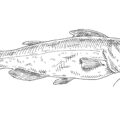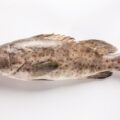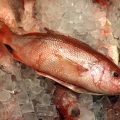Grouper and red drum are delicious types of fish but differ in appearance, habitat, feeding habits, and taste. These are two kinds of fish that are often caught in the Gulf of Mexico and the Southern Atlantic. These fish have a distinct flavor and texture, making them a prized possession for seafood lovers. However, many people tend to confuse one with the other due to their similar appearance. Although both fish are delicious, there are several crucial differences to be aware of.
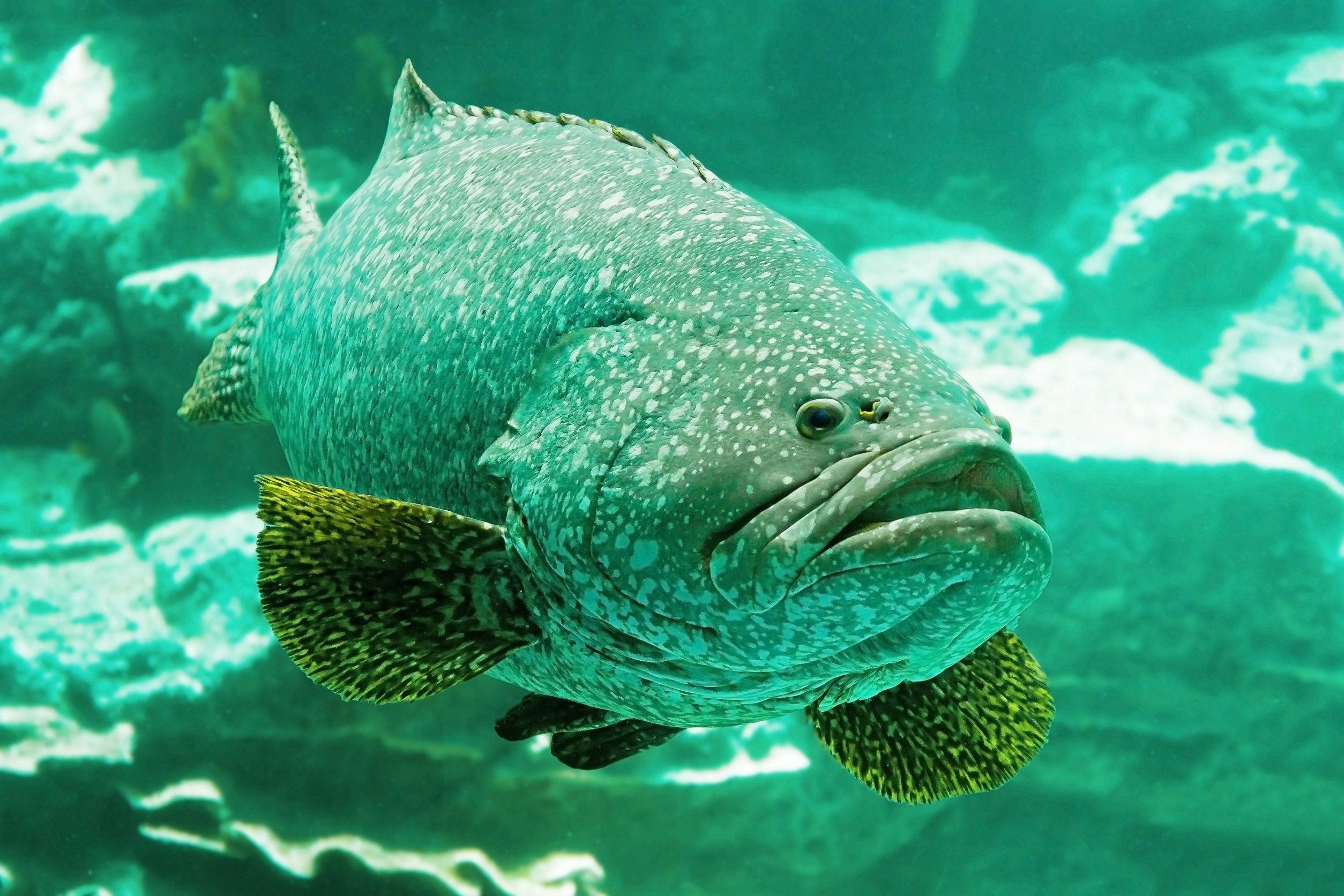
Physical Appearance
The grouper and red drum have different physical characteristics, which is the initial distinction between them. Groupers are distinguished by their enormous size and robust, muscular body structure. They have large heads and wide jaws with keen teeth for grabbing prey.
Groupers can be found in various colors, including brown, red, and yellow. They frequently have distinct skin patterns, such as dots or stripes. One of the most distinctive characteristics of groupers is their vast, expressive eyes. On the other hand, Red Drum is distinguished by its reddish-bronze hue, giving rise to its name. Their sleek physique, with a slightly sloping forehead and somewhat downturned lips.
Red Drums feature a noticeable black spot towards the base of their tail fin, which is why they are also known as “Redfish with a Spot.” Red drums are not as massive as groupers, but they can grow reasonably enormously, with adults averaging 20–30 inches in length.
Habitat
Another significant distinction between grouper and red drum is their habitat. Grouper can be found on stony coral reefs in the Gulf of Mexico and the Southern Atlantic. They enjoy warm water and are frequently seen at depths of up to 100 feet.
Grouper are bottom-dwelling fish that are frequently caught utilizing deep-sea fishing tactics. Red drums, on the other hand, can be found mainly in waterways and coastal environments. They enjoy shallow, brackish water that is mixed with fresh and saltwater. Red drums are adaptable fish that survive in various water conditions, from clear to muddy. They are found along seagrass beds, oyster bars, and other types of aquatic vegetation.
Diet
Another significant distinction between grouper and red drum is their nutrition. Grouper are opportunistic predators who consume anything they can get their hands on, including other fish, crabs, and cephalopods.
They are known to be voracious feeders and have been observed swallowing complete prey. Grouper possess strong teeth that allow them to crush their prey’s shells. Red drum, on the other hand, feeds primarily on small fish and crustaceans such as shrimp and crabs.
They are known to be energetic feeders, chasing their prey before catching it. The red drum is also recognized for using its sense of scent to detect prey, which is why it is known as “channel bass.”
Reproduction
Grouper are susceptible to overfishing due to their slow growth rate and late sexual development. Most grouper species live for 10 to 15 years.
Depending on the species, they usually achieve sexual maturity between the ages of 4 and 7 years. Spawning is how groupers reproduce by releasing eggs and sperm into the water column.
Spawning occurs at different times and locations based on the species and environmental conditions, such as water temperature and lunar cycles. Some grouper species have a spawning season, while others may spawn many times throughout the year.
Female groupers can lay millions of eggs annually, which are externally fertilized by males. The eggs are subsequently transported away by ocean currents, where they hatch into larvae that eventually settle on the seafloor and develop into juvenile fish.
On the other hand, the Red drum grows faster and reaches sexual maturity at a younger age than the grouper. They usually live 5 to 10 years, depending on environmental factors like the temperature of the water and food accessibility.
The red drum reproduces by broadcast spawning, which involves the discharge of eggs and sperm into the water column. Spawning is the most common coastal activity during the summer when water temperatures are at their highest. Female red drums can lay up to 1 million eggs annually, which the male externally fertilizes.
Within 24 to 48 hours, the eggs hatch into larvae, which mature into young fish within a few weeks. Red drum juveniles go to shallow, brackish environments like marshes and estuaries to eat and grow before moving offshore as adults.
It’s worth mentioning that grouper and red drum are subject to fishing laws, which may include limits on catching spawning adults. These laws protect these key fish species’ reproductive capabilities while ensuring sustainable fishing methods.
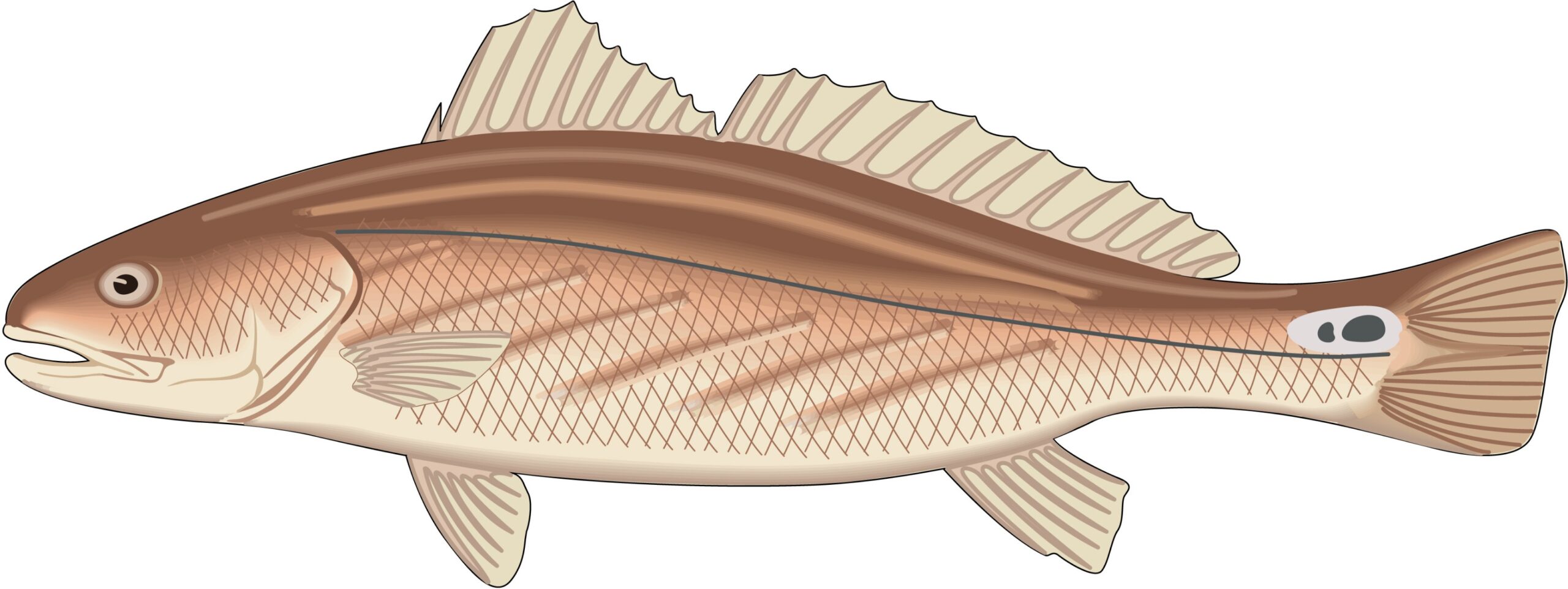
Fishing Techniques
Significant distinctions exist in the fishing techniques for catching grouper and red drum. Deep-sea fishing techniques such as bottom fishing or trolling are commonly used to catch grouper. Grouper are often found in deeper waters, adding another layer of difficulty to their capture. To reach the depths where grouper live, anglers must utilize specific equipment and techniques. Despite the problems, many anglers find that the pleasure of hooking and landing a giant grouper is worth the effort. It’s a feat that can be celebrated both at sea and at the dinner table.
Red drums are usually caught using casting, trolling, and bottom fishing tactics. Anglers often utilize artificial lures like soft plastic baits or topwater lures when casting red drums. These lures are made to look like little fish or shrimp, which are the principal food source for red drums.
Anglers often use a mixture of live bait and artificial lures when trolling for red drums. To induce red drum to strike, live bait like shrimp or mullet can be utilized, while artificial lures such as diving plugs or jigs can be used to replicate the movement of prey.
Another standard method is bottom fishing for red drums, which entails lowering a baited lure to the bottom of the water column and waiting for a red drum to take the bait. Anglers often use live or cut bait to encourage Red Drum to bite, such as shrimp or mullet.
Regulations
Finally, grouper and red drum are subject to fishing restrictions intended to safeguard their numbers and maintain sustainable fishing methods. These rules can differ based on where you live and the time of year. As a result, anglers must know the rules and regulations in their area. Because of worries about overfishing, grouper fishing is regulated in the Gulf of Mexico and the Southern Atlantic. These laws include size limits, bag limits, and closed seasons.
Anglers should always check the most recent regulations before deciding on a grouper fishing trip. Fishing regulations also cover red drums, though these are generally less stringent than those for grouper. In nearly every region, you will find size and bag limits and rules on the use of particular kinds of gear.
Taste
Grouper is a solid, white-fleshed fish with a mild, sweet flavor similar to halibut or sea bass. It has a juicy texture and is frequently grilled, baked, or fried. Grouper is a versatile fish that may be used in a wide range of recipes, including ceviche, sushi, sandwiches, and tacos.
On the other hand, red drum has a slightly more prominent flavor than grouper, with a moderately sweet and nutty flavor. It features firm, white-fleshed meat, frequently described as “flaky” and popular in Cajun and Creole cooking.
Red drum is frequently grilled, blackened, or pan-seared, and it is also popular in stews and soups. The flavor of both grouper and red drum can vary based on characteristics such as the fish’s age and size and how it is prepared. Both fish should be eaten fresh and are usually caught and prepared on the same day for optimal flavor and freshness.
What are the economic impacts of grouper and red drum fishing?
The financial impact of grouper and red drum fishing is substantial domestically and globally. Grouper and red drum are highly valued for their meat and are important commercial and leisure fishing targets. The following are some significant points about the economic impact of grouper and red drum fishing:
Commercial fishing
Many coastal regions, notably the Gulf of Mexico and the southeastern United States, rely on grouper and red drum for commercial purposes. Commercial fishermen in the Gulf of Mexico caught 5.5 million pounds of grouper in 2019, with a dockside market value of $21.2 million, based on the National Oceanic and Atmospheric Administration (NOAA). Meanwhile, red drums are primarily fished in the Atlantic Ocean, with 3.4 million pounds caught in 2019 and a dockside value of $6.7 million.
Recreational fishing
Grouper and red drum are popular recreational fishing species due to their size and fighting prowess. According to NOAA, recreational fishers collected an estimated 1.7 million pounds of grouper in the Gulf of Mexico in 2019, with a $99.7 million economic effect. Recreational red drum fishing is prevalent, especially in the southeastern United States, with a $30.9 million economic impact in 2019.
Employment
Grouper and red drum fishing provide substantial jobs in coastal areas, both in the industrial and recreational sectors. According to NOAA, the commercial grouper fishery in the Gulf of Mexico supported 1,013 jobs in 2019. Meanwhile, the recreational fishing industry generated an estimated 4,600 jobs. Red drum fishing also provides work in the southeastern United States, with an estimated 1,500 jobs.
Tourism
Grouper and red drum fishing can also be popular tourist attractions, especially in locations with a strong fishing culture or tradition. For instance, recreational fishing for grouper and red drum contributes considerably to Florida’s tourism economy, with an anticipated economic effect of $6.5 billion in 2019.
Export markets
Red drums and grouper are also sold to overseas markets, primarily in Asia. For example, with an expected import value of $8.6 million in 2020, China is a large importer of red drums from the United States. These export markets can generate additional cash for fishermen and processors while supporting these fisheries’ financial stability.
Processing and distribution
Aside from fishing, grouper and red drum processing and distribution sustain jobs and economic activity in coastal areas. These fish may be sold to restaurants, grocery stores, or other merchants or exported to overseas markets by processors and distributors.
According to NOAA, the processing and distribution of grouper in the Gulf of Mexico generated an estimated 435 jobs in 2019.
Ancillary businesses
Grouper and red drum fishing also support a variety of ancillary enterprises in coastal areas, including boat builders, gear suppliers, and bait and equipment shops. These companies may not be directly dependent on grouper or red drum catches, but they profit from the general economic activity provided by the fishing industry.
Conclusion
While grouper and red drum are prevalent and important fish species, they differ significantly in appearance, habitat, and behavior. Groupers are more significant and have a more robust body form.
On the other hand, red drums are more streamlined and have conspicuous black patches on their tails. Grouper prefer rocky or coral areas, but red drums can be found in many shallow coastal environments.
Furthermore, groupers are often solitary or territorial, whereas red drummers form big schools. Understanding these distinctions is essential for recreational and commercial fishermen since it can influence fishing strategies, gear selection, and habitat preferences.
The challenge of getting a large grouper and the joy of bringing in a hard-fighting red drum are both rewarding fishing experiences. Whether you like the thrill of a hard fight or the satisfaction of capturing a large fish, both species have something unique to offer anglers. Whether you’re an experienced angler or a novice, try these two fish for a great day on the lake.


